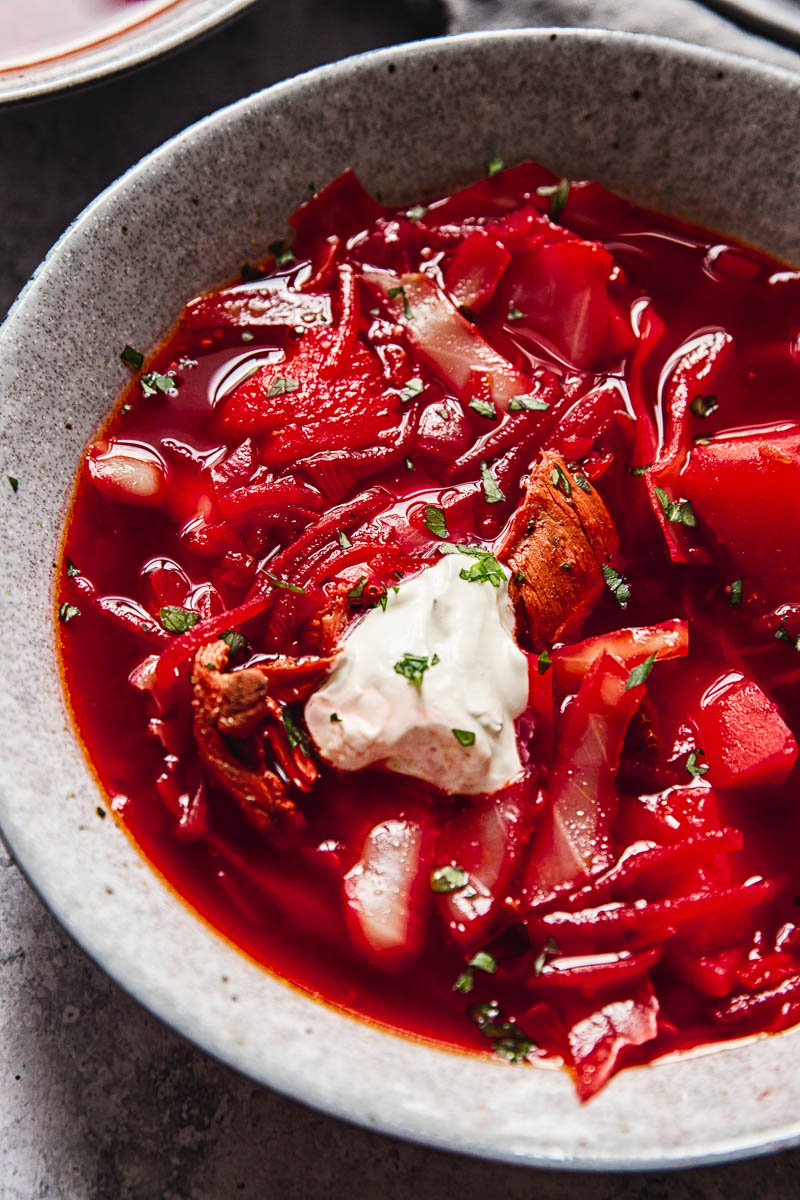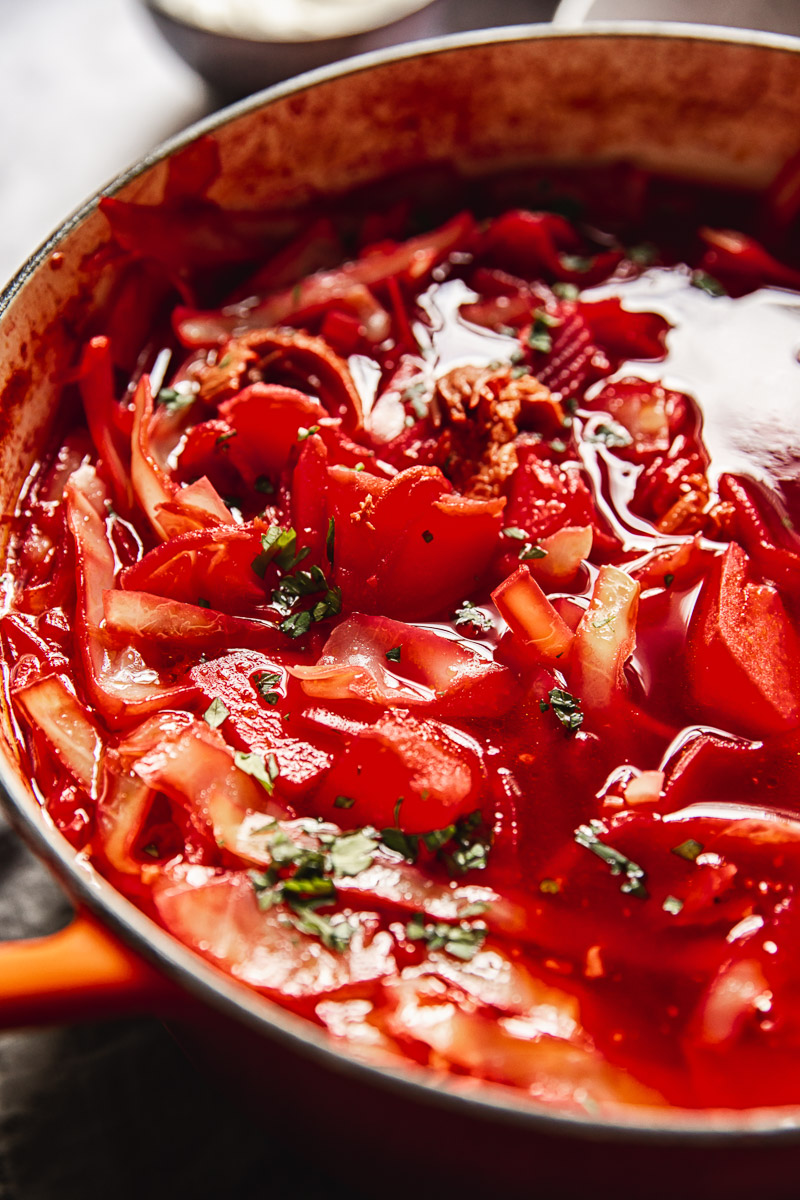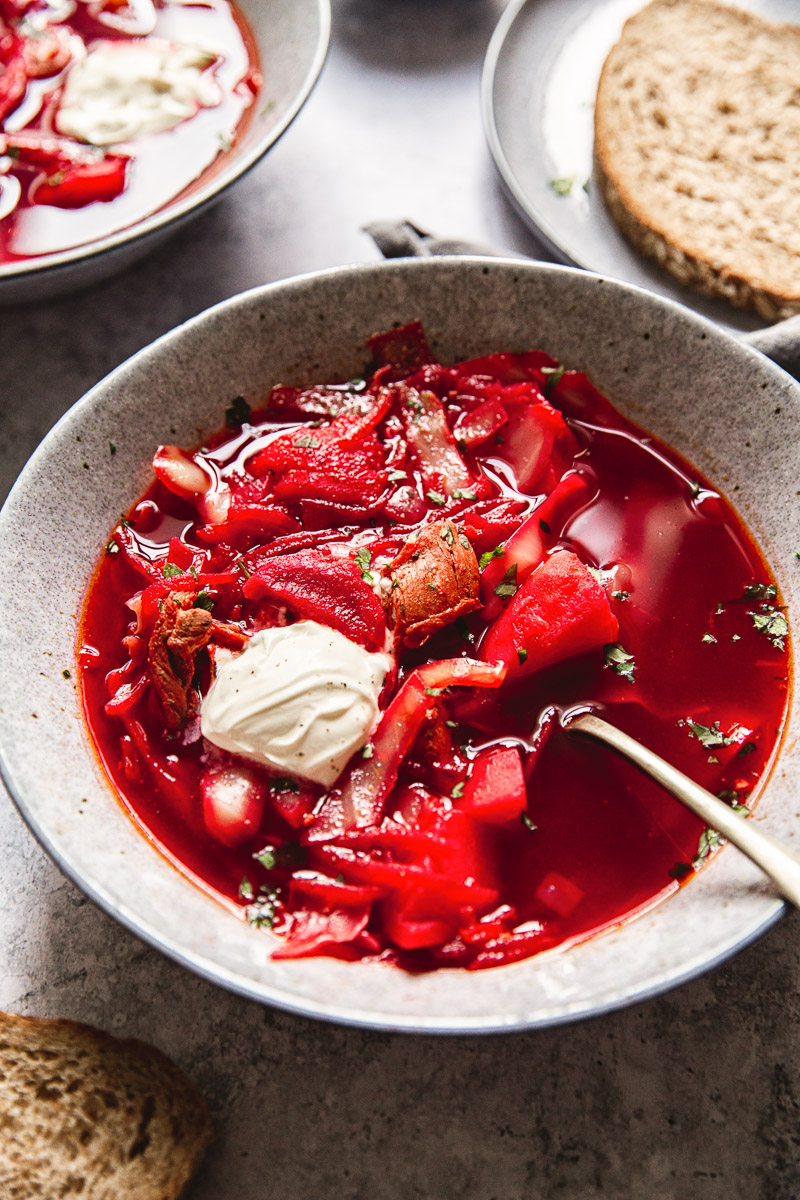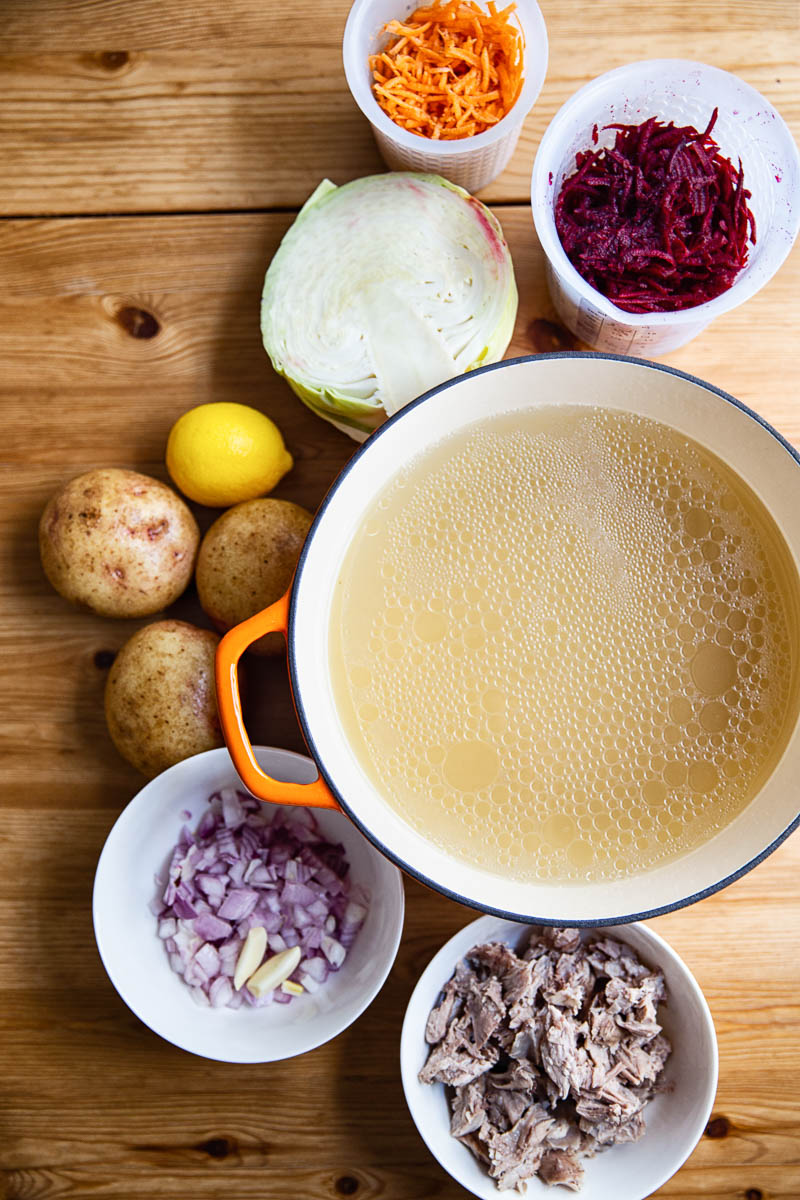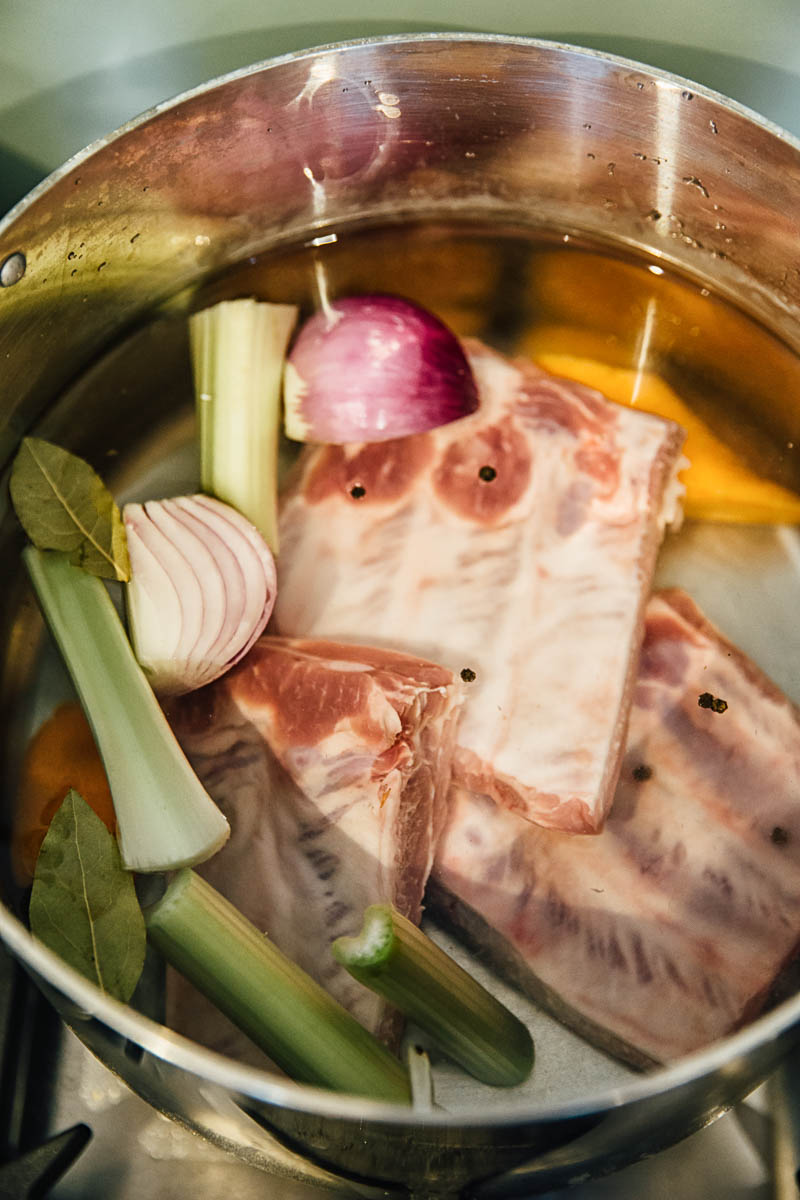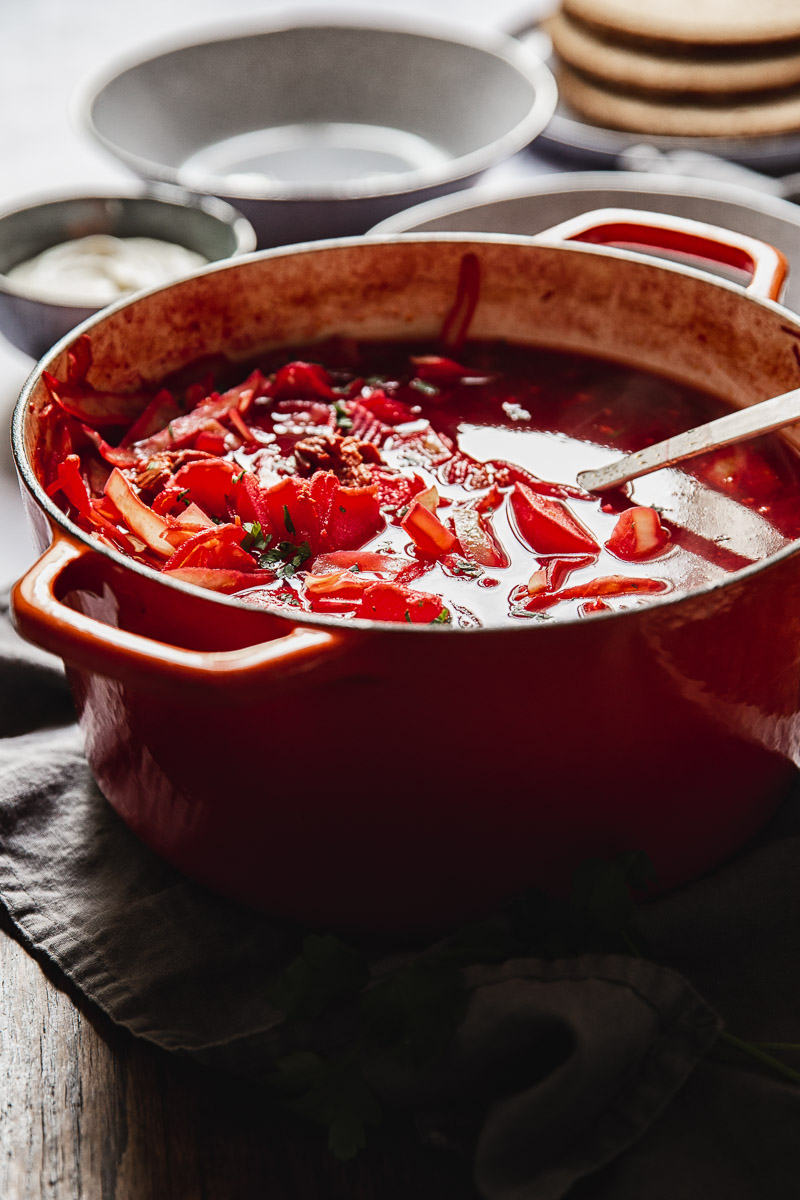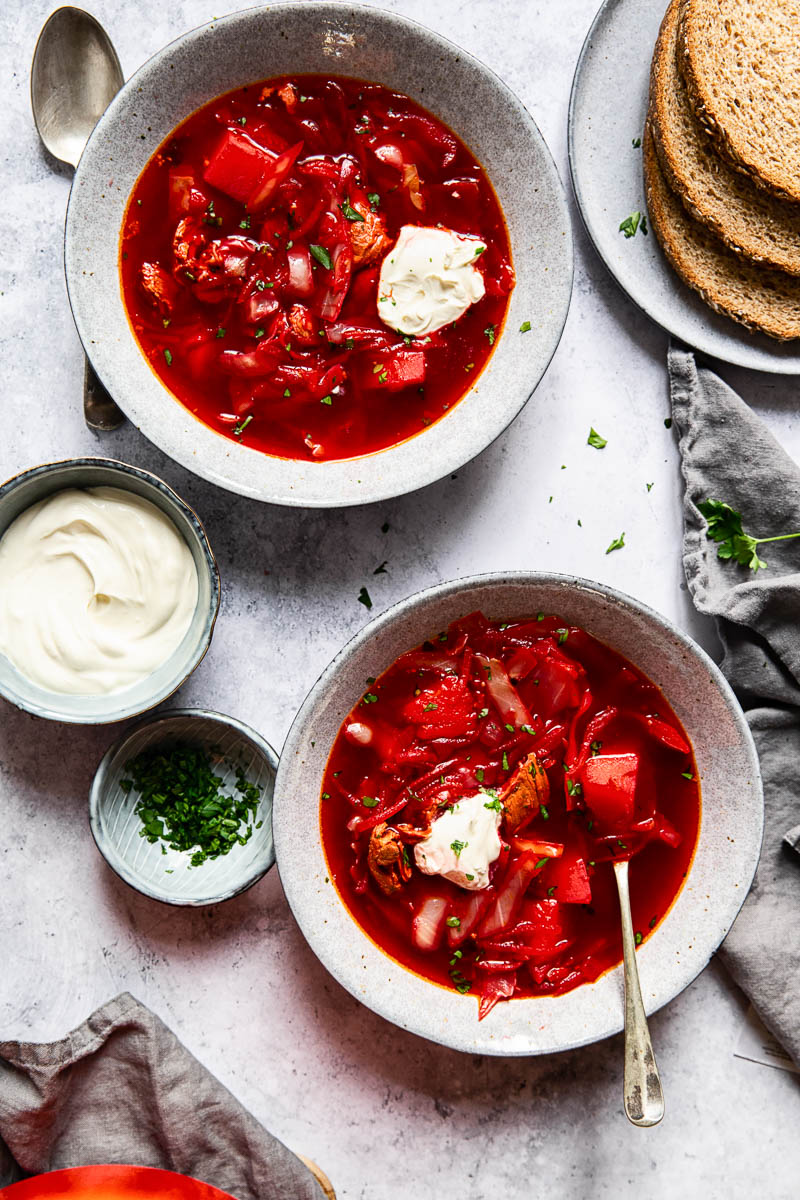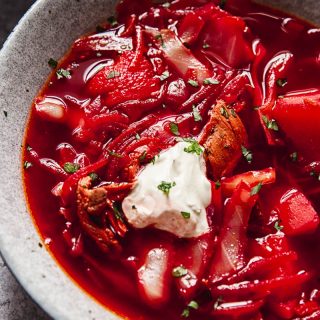If you like this borscht recipe, try another Ukrainian classic Potato, Bacon and Caramelised Onion Vareniki (Pierogi). I can hardly believe I am finally sharing my family’s borscht recipe! The recipe that was at the top of my list when I first started my blog years ago. It took me this long because BORSCHT has such a long history and an important part in Eastern European cuisine. It is a hefty task to deliver the perfect recipe, which comes with a great deal of responsibility to do it justice. Sharing my borscht is also one of the simplest tasks because the recipe has been in my family for a few generations. It’s in my blood, very much like my Beef Stroganoff recipe or my Cabbage Rolls recipe.
Is Borscht Russian or Ukrainian?
It’s worth clarifying pronunciation as borsch is more accurate. Yes, there is no ‘t’ at the end of the word. I know…mind blown! And although most people associate this recipe with Russia it is actually Ukrainian. That being said, there are historical records of Russian tsars eating it centuries ago and the soup is almost as popular in Russia as it is in Ukraine. A summer version called Green Borscht is made with sorrel. Apart from the same name, though, it is an entirely different recipe. There is also a Polish borscht and although I don’t know as much about it I know that it also features beets.
Ingredients
So what ingredients go into borscht? Trick question! The truth is that the recipe ingredients vary by country, region and households. However, several ingredients stay unchanged and they are the ones that make a soup into borscht.
beets cabbage potatoes carrots onions
Traditionally there will also a little meat, such as beef, chicken or pork, with the stock will be based off one of these. However, you can work off this list ingredients to make a vegetarian borscht.
Making borscht
1. Stock
Every building needs a solid foundation and every soup starts with a great stock. Making a delicious stock is by far the most time consuming part of this recipe. It’s not difficult, it just takes time. The best flavour comes from meat on a bone, simple vegetables like onions, carrots and celery and a couple of aromatics. My mother always used bay leaves and peppercorns and I do the same. If you want to be even more authentic, use celery root for your stock instead of celery. However, I realise the root is more difficult to source outside of Eastern Europe, and that is why I included celery.
2. Soup
The soup itself takes no more than 30 minutes to make once the stock is made and clarified. If you are short for time, I recommend making the stock the night before or even purchasing a good quality broth from a supermarket. You don’t need to master specific techniques for making an authentic borscht. But you will need to add vegetables in a specific order to ensure they all get cooked to perfection in the end. For example, cabbage doesn’t take too long to cook and therefore needs to be added last. Lastly, grated carrots and chopped onions are always sautéed in sunflower oil or butter until soft and golden, and added to borscht towards the end. In Russian and Ukrainian cooking this method is called “zazharka“. Many cooks do the same with beets but sautéing beets separately only adds more unnecessary steps to the recipe and doesn’t contribute anything to the flavour. I tend to skip sautéing and add raw grated beets directly to the soup.
Serving suggestions
Historically borscht is eaten for lunch as a first course followed by the second course of “meat and potatoes” in Ukraine and Russia. Although traditionally it was meat and potatoes, I put it in quotations as it could be anything other than soup. The third course is something sweet. Although traditional, not many people have the time or appetite to eat this way anymore due to busy lives, so many have just the soup. Borscht is almost always served with a dollop of smetana or sour cream and sprinkled with fresh herbs like dill or parsley. Fresh bread like sourdough or rye bread is also a permanent accompaniment to this delicious red-coloured soup.
Storage and leftovers
If the sour cream hasn’t been added, any leftover soup can be covered securely and stored in a fridge for 2-3 days. I might even recommend it, as the soup can taste better the next day after the flavours have had the chance to meld together. Borscht can be frozen, although the potatoes won’t love freezing and defrosting and will become a bit soggy. If you do freeze, it will keep for 2-3 months. Reheat leftovers in a microwave or in a saucepan over medium heat.
More Eastern European soup recipes
Restaurative Beef and Cabbage Soup ‘Shchi’ Russian sweet and sour beef stew Solyanka Meatball soup Yellow Split Pea Soup
